In my last post on OpenFalklands I looked at the current status of Falkland Islands satellite capacity which dictates the quality of experience of using the Internet in the Falkland islands. Another factor that directly affects experience is the use of a monthly quota or allowance to cap the amount of Internet bytes that can be downloaded.
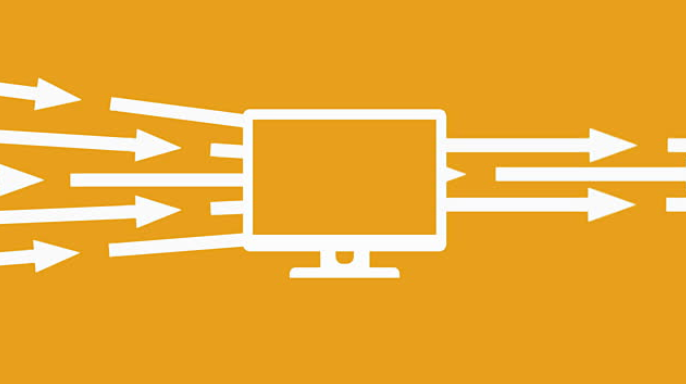
I’d like to take a look at this as it is such a fundamental element to the everyday on-line life of parents, children and companies.
There is probably no need to look back to 2004 as I did in the post linked above, but instead let’s just look at the quota Key Performance Indictors (KPIs) as specified in the exclusive licence for the Islands’ ISP.
These were the published quotas:
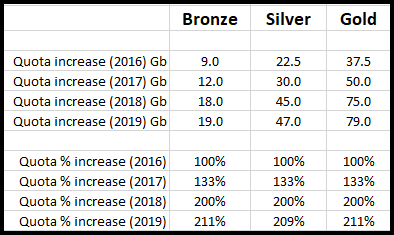
The key issues I’d like to talk focus on is “Why is there a usage quota?” and “What is its role?”.
Conspiracy theories abound worldwide that circle around any traditional ISP or mobile operator that has a usage quota policy. Some may have an element of truth about them; most not.
The most common conspiracy theory is that is that they are there to make money for the operator – especially if there is a massive overage charge associated with it which used to be the case in the Falkland Islands. The 2018 policy changed this in that if a customer goes over-quota then they are completely cut-off until they purchase a ‘top-up’..
If you were wondering where this policy originated, then look no further than the 2014 Cartesian report ‘FIG Strategic Telecoms Review’ where they recommended:
“As part of the Price Cap and Customer Protection regulation to reduce bill shock we propose that Sure presents potential solutions to FIG.
Cut off service: Once the cap has been exceeded by a pre-defined level (e.g. £50) the user would be cut off or severely throttled, and would need to opt-in to incur out of bundle overage charges.Add on Bundles: Data bundles can be opted into upon reaching the monthly allowance such as 0.5 GB, 1 GB or 5 GB to address different usage needs”.
The real reason for implementing a monthly quota is an engineering one. This is one of the key methods of ‘throttling’ IP traffic when user demand far exceeds bandwidth available. In the case of the Falkland Islands, the principle congestion point is the 2018 210Mbit/s satellite capacity.
When ‘demand’ is greater than ‘capacity’ think of a large diameter water pipe connected the a smaller one – all the water that cannot go down the smaller pipe has to be discarded. Another analogy is shown below where cars can end up in the river unless they are slowed down. The effect of congestion will be noticed on the Falkland Islands at peak demand at lunchtimes (when most go home) and at 16:00 in the afternoon when Internet download speeds can slow to a crawl.
i.e. Incoming number of packets & speed of packets > outgoing packets & speed of packets.
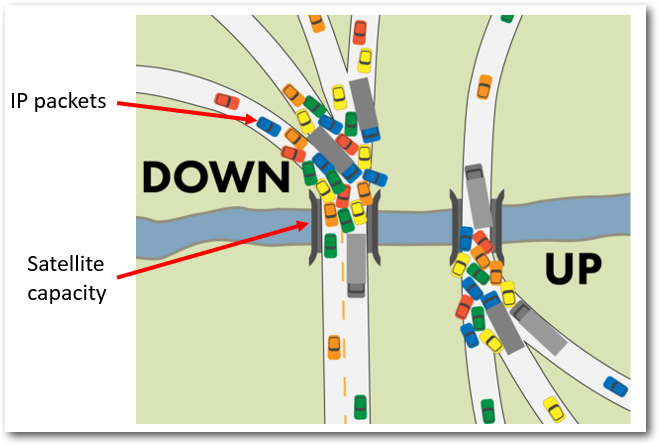
In a well manged network, the speed and number of packets arriving at the satellite matches the speed and number that the satellite can handle without losing any so everyone is happy(ish).
i.e. Incoming number of packets & speed of packets = outgoing packets & speed of packets
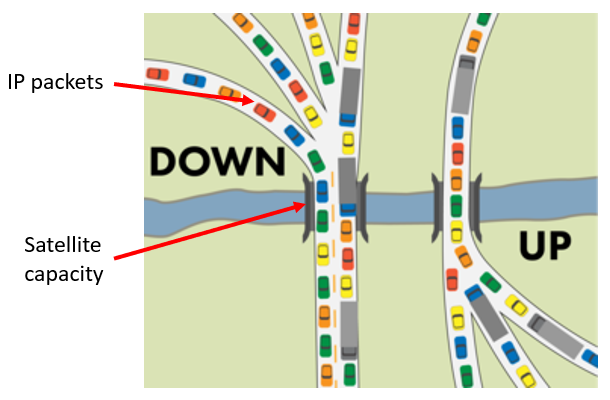
The adoption of usage quotas and defined maximum access rates are two of the key ways that can limit the number of packets and reducing the possibility of overload the satellite link. This is entirely valid for the Falkland islands. I will talk about access rates in a future post.
Another major way of managing excess demand or too many packets reaching the satellite link is called ‘Traffic Shaping’. Most ISPS and certainly mobile operators undertake this legitimate activity. What it means is that if there are too many packets arriving at the gateway connected to the satellite link, they are deliberately delayed or slowed down so as not to overload the satellite link and cause packet loss.
This explains why the Internet significantly slows down at times of peak congestion. It is generally not the global Internet slowing down but the result of local Traffic Shaping. The picture below shows the concept graphically
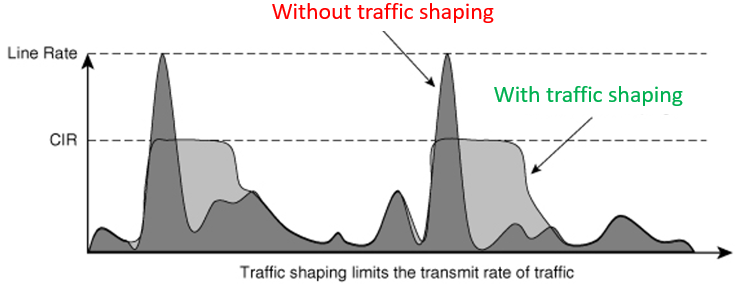
Sure implements Traffic Shaping otherwise the Falkland Islands’ broadband would simply grind to a halt.
Different Traffic Shaping profiles can be applied to user types, application types & time-of-day (e.g. night time free period).
Sure can claim that satellite link is never congested because it’s true! This is good engineering practice by Sure and the concept is used by most ISPs around the world.
This can be seen in the picture below taken from the Cartesian report again based on a graph created by Sure. Of course, demand is much higher at night time than during the day. The redline was the satellite capacity of 68Mbit/s in 2014.
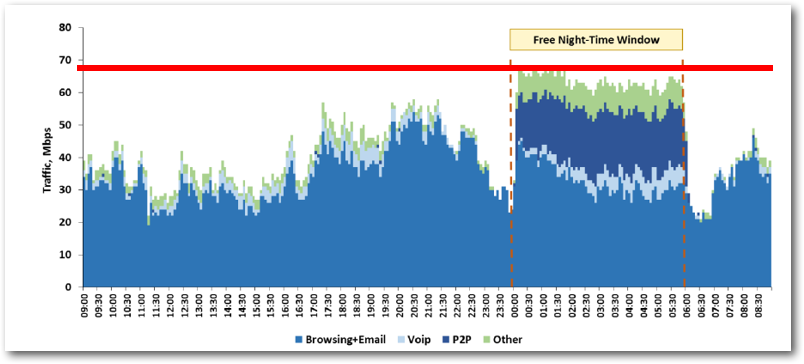
So let’s be clear about this. The use of a quota regime, Olympic service access rates and Traffic Shaping is acceptable on the Falklands Islands and combined with traffic shaping it prevents the broadband service from collapsing.
A key question however, is what packets should contribute to users’ data quotas?
The technical stuff discussed above is all well and good but it does bring to mind another issue and the question to ask is”
“Why if the quota regime is focussed on limiting satellite bound traffic, why do packets that never leave the island still count towards the quota?”.
To be fair, this is a key issue that has been discussed by many on the Falkland Islands in the last ten years, but no conclusion has ever been reached.
Yes, it can always be claimed that it billing systems would need to upgraded or that the local Internet access network would be also overloaded without a quota but I would see these a relatively minor issues.
Yes, there is little IP traffic today that stays on the island so it could be valid to claim that, because of this, spending money on upgrading infrastructure or the billing system would not be economic. By the way, I understand Sure on Falkland Islands, St Helena and Ascension have integrated their billing systems and are now run remotely at headquarters (Source: St Helena Independent Friday, 15th December 2017).
However, local businesses have set up VPNs for accessing emails through their company’s servers and I would assume that this could be double charged for traffic at both ends.
Yes, it could be claimed that Sure’s revenue would be hit.
It is not a question for today’s Internet situation but an absolute key one going forward.
The crucial issue is that the Falkland Islands must implement a local high-bandwidth IP network that could support high data rate applications such as the Content Distribution Network recommended by Cartesian and discussed in my post The enigma of Falkland Islands satellite capacity.
The creation of this capability is key to ameliorating the consequences of being reliant on limited capacity satellite connectivity. Although satellite solutions are coming along apace, a local network can be implemented in the near term at manageable cost and, in my opinion, is of a higher or equal priority to spending more on satellite capacity in the near term. What contributes to users’ quota is key issue in this vision.
My next post will talk about the benefits of a local high-speed network and what it could look like.
If you have found this interesting, please register on the site and forward the links to those that may be interested.
Chris Gare, March 2019 Copyright: OpenFalklands.com